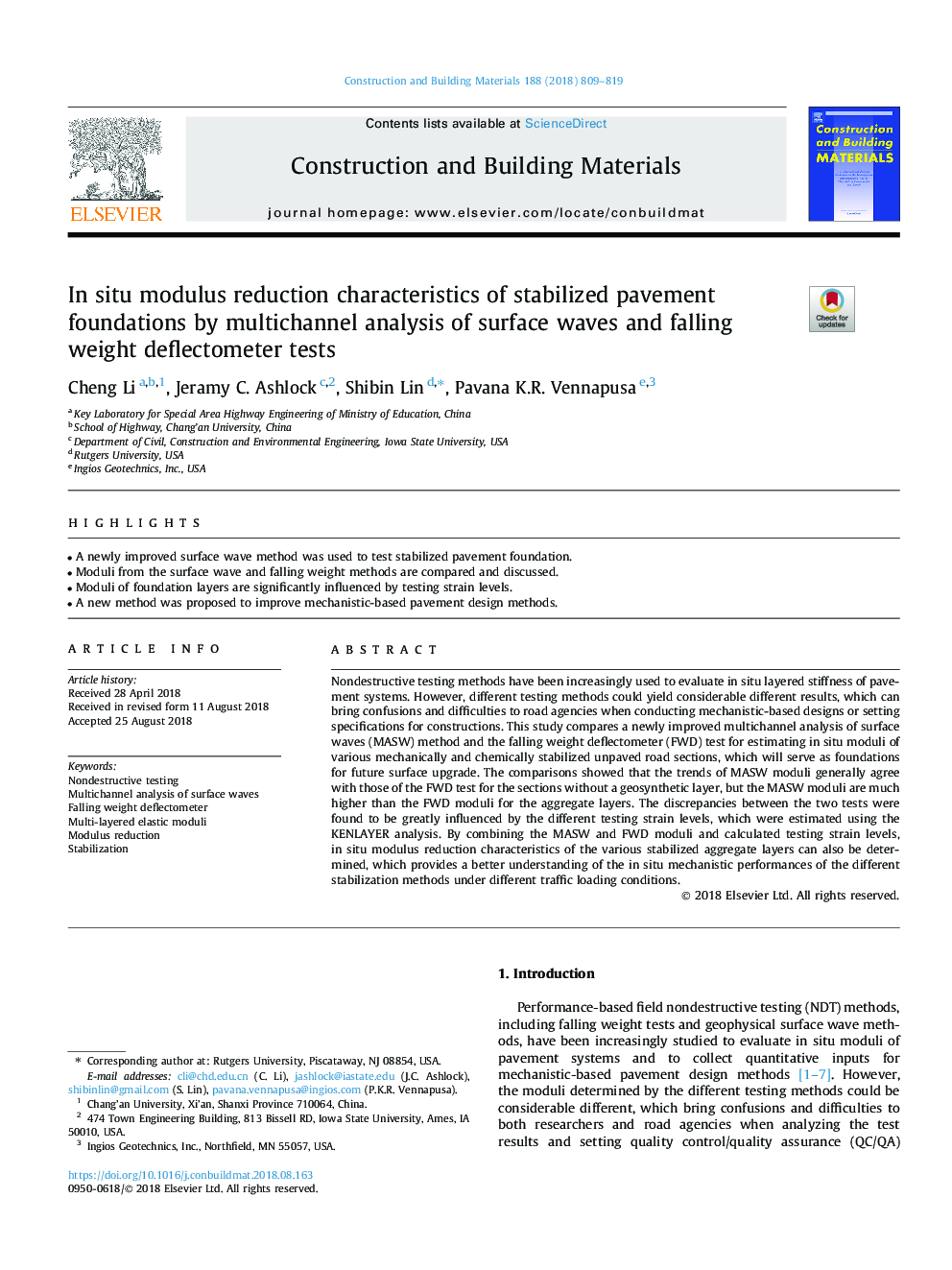| Article ID | Journal | Published Year | Pages | File Type |
|---|---|---|---|---|
| 10131856 | Construction and Building Materials | 2018 | 11 Pages |
Abstract
Nondestructive testing methods have been increasingly used to evaluate in situ layered stiffness of pavement systems. However, different testing methods could yield considerable different results, which can bring confusions and difficulties to road agencies when conducting mechanistic-based designs or setting specifications for constructions. This study compares a newly improved multichannel analysis of surface waves (MASW) method and the falling weight deflectometer (FWD) test for estimating in situ moduli of various mechanically and chemically stabilized unpaved road sections, which will serve as foundations for future surface upgrade. The comparisons showed that the trends of MASW moduli generally agree with those of the FWD test for the sections without a geosynthetic layer, but the MASW moduli are much higher than the FWD moduli for the aggregate layers. The discrepancies between the two tests were found to be greatly influenced by the different testing strain levels, which were estimated using the KENLAYER analysis. By combining the MASW and FWD moduli and calculated testing strain levels, in situ modulus reduction characteristics of the various stabilized aggregate layers can also be determined, which provides a better understanding of the in situ mechanistic performances of the different stabilization methods under different traffic loading conditions.
Keywords
Related Topics
Physical Sciences and Engineering
Engineering
Civil and Structural Engineering
Authors
Cheng Li, Jeramy C. Ashlock, Shibin Lin, Pavana K.R. Vennapusa,
